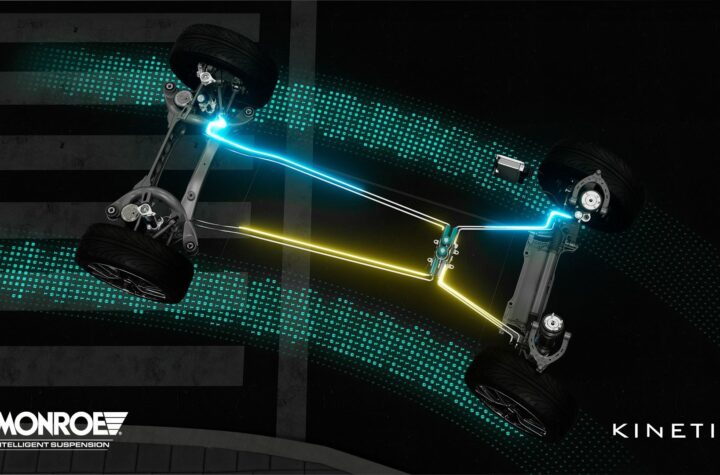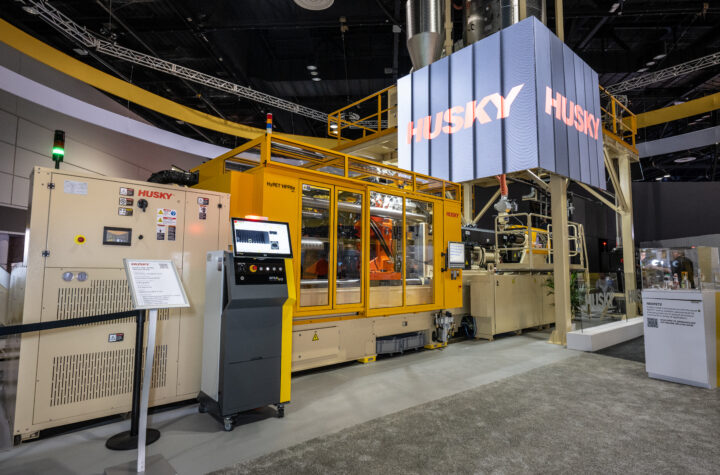Aluminum has already proven itself in the production of engine components across vehicle segments as well as in body parts for low-volume, high-end motor vehicles. It is now moving into the mass market through body in white components.
Automotive Industries (AI) asked Markus Nolte, VP Commercial at Nemak, why the company has moved into body-in-white.
Nolte: One of Nemak’s strengths is focus and for more than 30 years we grew fast with complex engine blocks, cylinder heads, and transmission components — all in aluminum. When Nemak started in the late 1970s, most of these components were made in cast iron. Today basically all cylinder heads and the majority of engine blocks are made of aluminum. About six years ago Nemak started exploring opportunities to grow in new components in which aluminum penetration was expected to increase. Large structural castings for body-in-white or chassis applications require similar competences as complex engine blocks or cylinder heads. The program has been successful, and we will deliver about 1.5 million structural components in 2017.
AI: How can Nemak lightweighting solutions help with engine performance, reduced emissions and quality optimizations?
Nolte: Nemak has an excellent track record in reducing component weight in a simultaneous engineering process with its customers. An example is the net weight reduction of a 4-cylinder engine block over three generations. Substituting cast iron with aluminum 15 years ago reduced the weight by more than 15 kg. Continuous optimizations and innovative ideas realized since then brought it down by an additional 10 kg. Our engineers delivered key enhancements, including increased mechanical properties, reduced wall thicknesses, optimized packaging through curved channels, and cast-in features substituting machining and assembly. Additional customer benefits include material cost reductions, increased engine performance, and improved efficiency through better cooling.
Ai: Can you share other examples?
Nolte: Alloy development remains an interesting area for both combustion and electric engines. In ICE applications we see a demand to further increase combustion pressure at high temperatures. Conventional Al-Si-Mg cast alloys have reached their limits even when adding expensive microhardeners. Al-Cu- or Al-Zn-Mg-based alloys are known for their excellent high temperature performance, but also for their difficulties to be cast in shape. After many years of research our engineers now have found the right recipe to combine high temperature performance, good castability, and competitive cost.
This innovative alloy has a mechanical strength at 300°C which is three times higher than standard alloys. Our first volume production order for what we call “NemAlloy” is for an inline 4-cylinder head with SOP in 2019. E-engines have very different needs. Loads and temperatures are lower, but electric conductivity plays an important role. Here our engineers work with OEMs and Tier 1s to find the best performancecost-ratio for cast e-engine housings and battery trays.
AI: As a supplier how are you helping OEMs to reduce costs?
Nolte: In investment-driven industries like casting, machining or body assembly opportunities to reduce costs over the lifetime of the component are limited once the investments are made. The opportunities start during the development or, even better, the concept phase. Nemak has defined “Cost Reduction Ideas” as one of four pillars of its R&D and innovation strategy.
Traditionally, engineers have focused on improving the performance of a product or adding new features. It requires additional skills and approaches to focus on cost reduction – by making things differently or by avoiding over-engineering. Typically, development work focuses on the critical areas and features of a component while less critical often get little or no attention.
We push our engineers to simplify product manufacturing without losing functional properties. For example, we recently developed a thinwalled cylinder head which reduces weight and material cost by more than 10%, SOP will be in 2019. Another example is the reduction of diversity of variants with the objective to avoid multiple tooling and validation, and to minimize investments. Performance variations can be developed out of the same rough casting design, using the same tooling.
Differentiation is achieved through different alloy compositions, heat treatment, machining, or other measures in the value chain. We also reduce development costs during prototyping. Simulation technologies reduce the number of development cycles, while 3-D printing and other rapid prototyping technologies cut tooling costs.
AI: The powertrain industry is expected to make a significant transformation during the next decades. How is Nemak preparing for these changes?
Nolte: Together with its customers Nemak has been working on e-mobility castings since 2011. Housings for e-motors require much tighter tolerances than conventional crank cases. Since starting our electric vehicle components business we have developed additional competences in both casting and machining which we now consider as competitive advantages.
We are proud to see around 150,000 BEVs on the roads running with a Nemak e-motor housing produced in our Poland facility. We are capable of offering a wide range of design concepts from two- or threepiece high pressure die castings to highly-integrated one-piece housings made in Precision Sand or Low Pressure Die Casting – all fully machined and ready for assembly. We also have invested in our capabilities to take on a large portion of the assembly work. What has changed over the last 18 months is the speed of industry transformation. In response we have created an E-mobility team with engineers, manufacturing and sales people focusing on housings, covers and other applications in electric powertrains.
Another important aspect in this regard is footprint. Nemak‘s strategic development has been guided by proximity to customers and cost competitiveness. Today, we are operating 38 facilities in 16 countries, and over 75% of our manufacturing is done in so-called low-cost countries. At the same time, plants in Germany, Austria, and the U.S. continue playing an important role as engineering centers and manufacturing sites close to customers.
AI: Talking more about structural components and body-in-white products in general. How is this area developing?
Nolte: Some years ago, several customers presented to us their plans for large aluminum body structures. Our focus has always been on large and technically demanding components, and body structures fit into this model. Our first orders were for aluminum shock towers and rear longitudinal members. They are manufactured in High Pressure Die Casting (HPDC), run all necessary secondary processes and are delivered ready for assembly. Today, we are producing more than 6,000 structural components daily, and we see that figure trending higher into 2018. Earlier this year we launched our first battery tray for a PHEV.
The 0,90 m x 0,50m tray is a produced through a single cast on a 4,400 ton HPDC machine. Nemak operates four structural component plants strategically located close to customer assembly plants – in Eastern Europe, Germany and Mexico. In China, we are running qualification programs to lay the groundwork for expanding our structural components business in this market. To better leverage our technological capabilities Nemak recently launched a dedicated organization for Vehicle Structures which reports directly to our CEO.
AI: Where do you see the biggest opportunities and what are the main challenges to grow Nemak‘s Vehicle Structures area further?
Nolte: The main drivers for aluminum in vehicle structures are weight reduction, part consolidation and improvements in driving performance. Additionally our engineers are continuously working to take cost out of the value stream. Alloys which do not require heat treatment and tooling optimizations to minimize the need for straightening are just two examples. Currently, applications of aluminum in vehicle structures are most often found in premium vehicles, SUVs and sports cars.
We see possibilities further opening up in high-volume applications as automakers execute their lightweighting and electrification strategies.
AI: What will be next steps in this area for Nemak?
Nolte: We are a company with a strong engineering and innovation background and have continuously broadened our engineering capabilities. Our team at our Vehicle Structures Engineering Center in Frankfurt is critical to these efforts, reinforcing our capabilities in joining and assembly while at the same time helping us to offer a broader variety of products, from body-in-white components to underfloor battery trays.
AI: What do you consider as essential to achieve continuing growth and success in the global markets?
Nolte: Proximity to customers is key to identify market needs and trends as early as possible. Organizations need to be flexible and agile, able to react quickly and to provide solutions earlier than others. Standards will continue playing an important role for global markets as long as they reduce cost. We are confident that our lightweighting strategy is taking us in the right direction to meet future market requirements.








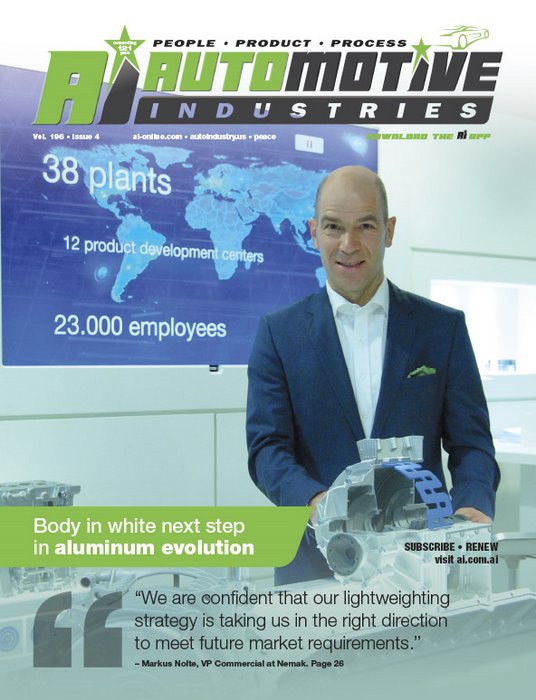





































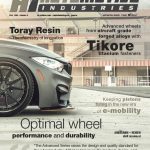 New range of bespoke hi-tech wheels
New range of bespoke hi-tech wheels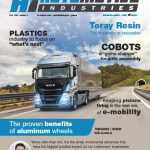 Aluminum wheels help reduce operating costs
Aluminum wheels help reduce operating costs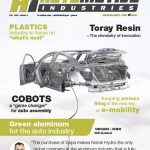 Norsk Hydro strengthens its global presence
Norsk Hydro strengthens its global presence Keeping pistons firing in the new era of e-mobility
Keeping pistons firing in the new era of e-mobility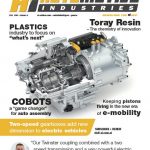 Full integration of electric motor and intelligent axle provides “best of all worldsâ€
Full integration of electric motor and intelligent axle provides “best of all worldsâ€
